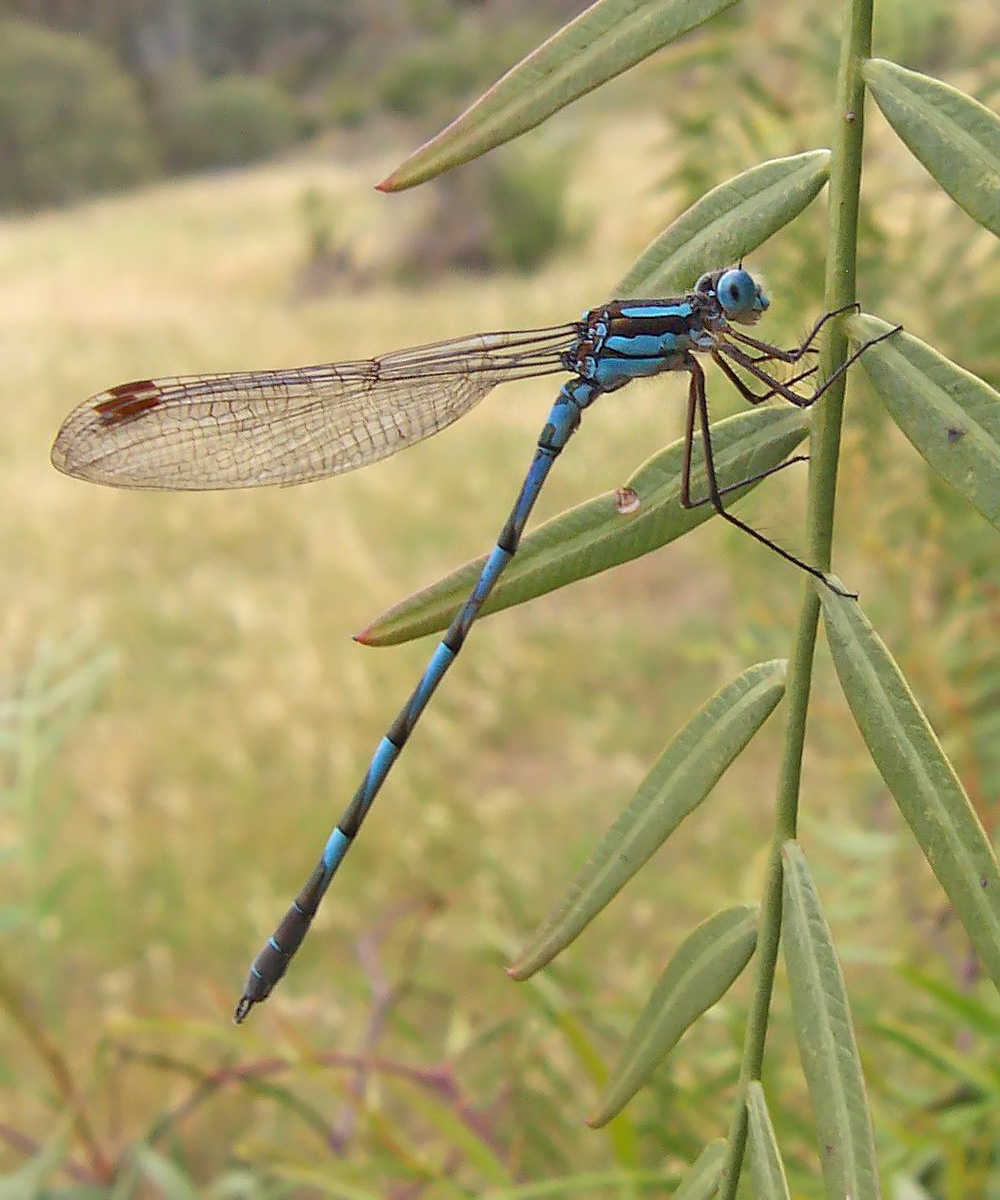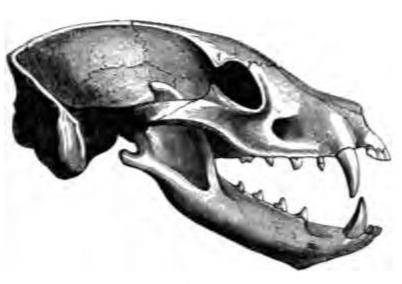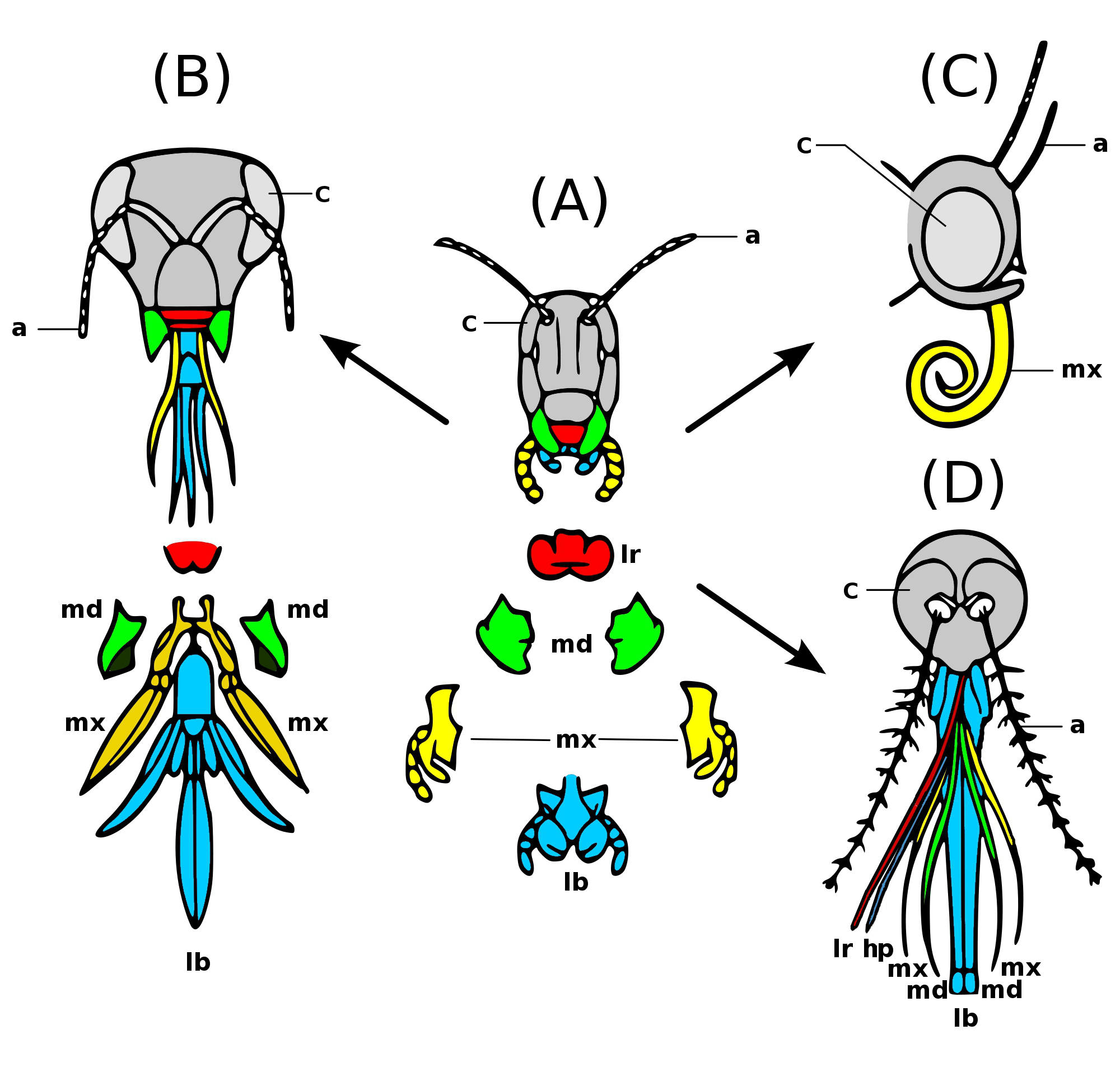|
Odonata Of Europe
Odonata is an order of predatory flying insects that includes the dragonflies and damselflies (as well as the '' Epiophlebia'' damsel-dragonflies). The two major groups are distinguished with dragonflies (Anisoptera) usually being bulkier with large compound eyes together and wings spread up or out at rest, while damselflies (suborder Zygoptera) are usually more slender with eyes placed apart and wings folded together along body at rest. Adult odonates can land and perch, but rarely walk. All odonates have aquatic larvae called naiads or nymphs, and all of them, larvae and adults, are carnivorous and are almost entirely insectivorous, although at the larval stage they will eat anything that they can overpower, including small fish, tadpoles, and even adult newts. The adults are superb aerial hunters and their legs are specialised for catching prey in flight. Odonata in its narrow sense forms a subgroup of the broader Odonatoptera, which contains other dragonfly-like insects. ... [...More Info...] [...Related Items...] OR: [Wikipedia] [Google] [Baidu] |
Johan Christian Fabricius
Johann Christian Fabricius (7 January 1745 – 3 March 1808) was a Danish zoologist, specialising in "Insecta", which at that time included all arthropods: insects, arachnids, crustaceans and others. He was a student of Carl Linnaeus, and is considered one of the most important entomologists of the 18th century, having named nearly 10,000 species of animals, and established the basis for the modern insect classification. Biography Johann Christian Fabricius was born on 7 January 1745 at Tønder in the Duchy of Schleswig, where his father was a doctor. He studied at the gymnasium at Altona and entered the University of Copenhagen in 1762. Later the same year he travelled together with his friend and relative Johan Zoëga to Uppsala, where he studied under Carl Linnaeus for two years. On his return, he started work on his , which was finally published in 1775. Throughout this time, he remained dependent on subsidies from his father, who worked as a consultant at Frederiks H ... [...More Info...] [...Related Items...] OR: [Wikipedia] [Google] [Baidu] |
Insectivorous
A robber fly eating a hoverfly An insectivore is a carnivorous animal or plant which eats insects. An alternative term is entomophage, which can also refer to the human practice of eating insects. The first vertebrate insectivores were amphibians. When they evolved 400 million years ago, the first amphibians were piscivores, with numerous sharp conical teeth, much like a modern crocodile. The same tooth arrangement is however also suited for eating animals with exoskeletons, thus the ability to eat insects can stem from piscivory. At one time, insectivorous mammals were scientifically classified in an order called Insectivora. This order is now abandoned, as not all insectivorous mammals are closely related. Most of the Insectivora taxa have been reclassified; those that have not yet been reclassified and found to be truly related to each other remain in the order Eulipotyphla. Although individually small, insects exist in enormous numbers. Insects make up ... [...More Info...] [...Related Items...] OR: [Wikipedia] [Google] [Baidu] |
Nannophya Pygmaea
''Nannophya pygmaea'', known variously as the scarlet dwarf, northern pygmyfly, or tiny dragonfly, is a dragonfly of the family Libellulidae, native from Southeast Asia to China and Japan, occasionally found south to Australia. Description This species has the distinction of being the smallest of the dragonflies, with a wingspan of only . References External links Scarlet dwarfat ARCBCat CSIROat bjbug.com  {{Authority control
Libellulidae
Odonata of Asia
Insects of Indonesia
Insects of Southeast Asia
Taxa named by Jules Pierre Rambur
Insects described in 1842 ...
{{Authority control
Libellulidae
Odonata of Asia
Insects of Indonesia
Insects of Southeast Asia
Taxa named by Jules Pierre Rambur
Insects described in 1842 ...
[...More Info...] [...Related Items...] OR: [Wikipedia] [Google] [Baidu] |
Mecistogaster
''Mecistogaster'' is a genus of large Neotropical damselflies in the family Coenagrionidae, commonly known as helicopter damsels. There are eleven species distributed from Mexico to Argentina Argentina, officially the Argentine Republic, is a country in the southern half of South America. It covers an area of , making it the List of South American countries by area, second-largest country in South America after Brazil, the fourt .... Members of this genus have very long abdomens which they use to deposit their eggs in the water-filled rosettes of bromeliads growing on trees in the forest. Species include: *'' Mecistogaster amalia'' – Amalia Helicopter *'' Mecistogaster amazonica'' *'' Mecistogaster asticta'' *'' Mecistogaster buckleyi'' – Blue-tipped Helicopter *'' Mecistogaster jocaste'' *'' Mecistogaster linearis'' *'' Mecistogaster lucretia'' *'' Mecistogaster martinezi'' *'' Mecistogaster modesta'' *'' Mecistogaster ornata'' – Ornate Helicopter *'' ... [...More Info...] [...Related Items...] OR: [Wikipedia] [Google] [Baidu] |
Petalura Ingentissima
''Petalura ingentissima'', the giant petaltail, has been described as the world's largest dragonfly, with a wingspan of 160 mm. It is found in Queensland, Australia. Dr R.J. Tillyard described the giant petaltail in 1908. Its species name is derived from the Latin adjective ''ingens'' "huge". It is one of five species in the Australian genus ''Petalura''. A large heavily built dragonfly, the giant petaltail has a black body with some yellow markings. The female's wingspan can be 158–162 mm and body length 125 mm, the largest dragonfly species in overall dimensions although members of the genus ''Tetracanthagyna'' can have longer wings and ''Chlorogomphus, Chlorogomphus papilio'' a larger wing area. Measuring 5.9-6.3 cm long, the larvae are unusual in that they live in burrows along the river margin and hunt passing prey. Gallery Giant Petaltail 3A8593.jpg, Female at Tully Gorge, Queensland 013323996 Petalura ingentissima dorsal.jpg, Type specimen, male, ... [...More Info...] [...Related Items...] OR: [Wikipedia] [Google] [Baidu] |
Tetracanthagyna Plagiata
The giant hawker (''Tetracanthagyna plagiata'') or the gigantic riverhawker, is a species of dragonfly in the family Aeshnidae. It is found throughout Sundaland, having been recorded on Thailand, Peninsular Malaysia, Singapore, Sumatra, and Borneo. It is the type species for the genus ''Tetracanthagyna''. It is the heaviest of all living Odonata, and additionally are the second largest of all living Odonata, Odonates by wingspan, second only to ''Megaloprepus caerulatus'' (Pseudostigmatidae). ''T. plagiata'' is additionally the largest living dragonfly, with a maximum wingspan of , exceeding the wingspan of runner-up ''Petalura ingentissima'' at . Taxonomy ''Tetracanthagyna plagiata'' was initially described by Charles Owen Waterhouse in 1877 under the name ''Gynacantha plagiata'', classifying it under the now-separate dragonfly genus ''Gynacantha'', the Type locality (biology), type locality was listed as Borneo. Robert McLachlan (entomologist), Robert McLachlan commented that ... [...More Info...] [...Related Items...] OR: [Wikipedia] [Google] [Baidu] |
Megaloprepus Coerulatus
''Megaloprepus caerulatus'', also known as the blue-winged helicopter, is a forest giant damselfly of the family Coenagrionidae. Forest giant damselflies were previously recognized as their own family, Pseudostigmatidae. ''M. caerulatus'' is found in wet and moist forests in Central and South America. It has the greatest wingspan of any living damselfly or dragonfly, up to in the largest males. Its large size and the markings on its wings make it a conspicuous species; a hovering ''Megaloprepus'' has been described as a "pulsating blue-and-white beacon". As an adult it feeds on orb-weaver spiders in the forest understory, which it plucks from their webs. It lays its eggs in water-filled holes in trees; males defend the larger holes as breeding territories. The naiad is a top predator in its tree-hole habitat, feeding on tadpoles and aquatic insects, including the larvae of mosquito species that are vectors of human disease. Egg and naiad ''Megaloprepus'' lays its eggs in th ... [...More Info...] [...Related Items...] OR: [Wikipedia] [Google] [Baidu] |
Central America
Central America is a subregion of North America. Its political boundaries are defined as bordering Mexico to the north, Colombia to the southeast, the Caribbean to the east, and the Pacific Ocean to the southwest. Central America is usually defined as consisting of seven countries: Belize, Costa Rica, El Salvador, Guatemala, Honduras, Nicaragua, and Panama. Within Central America is the Mesoamerican biodiversity hotspot, which extends from southern Mexico to southeastern Panama. Due to the presence of several active geologic faults and the Central America Volcanic Arc, there is a high amount of seismic activity in the region, such as volcanic eruptions and earthquakes, which has resulted in death, injury, and property damage. Most of Central America falls under the Isthmo-Colombian cultural area. Before the Spanish expedition of Christopher Columbus' voyages to the Americas, hundreds of indigenous peoples made their homes in the area. From the year 1502 onwards, Spain ... [...More Info...] [...Related Items...] OR: [Wikipedia] [Google] [Baidu] |
Insect Mouthparts
Insects have arthropod mouthparts, mouthparts that may vary greatly across insect species, as they are adapted to particular modes of feeding. The earliest insects had chewing mouthparts. Most specialisation of mouthparts are for piercing and sucking, and this mode of feeding has evolved a number of times independently. For example, mosquitoes (which are true flies) and aphids (which are Hemiptera, true bugs) both pierce and suck, though female mosquitoes feed on animal blood whereas aphids feed on plant fluids. Evolution Like most external features of arthropods, the mouthparts of Hexapoda are highly derived. Insect mouthparts show a multitude of different functional mechanisms across the wide diversity of insect species. It is common for significant Homology (biology), homology to be conserved, with matching structures forming from matching Primordium, primordia, and having the same evolutionary origin. However, even if structures are almost physically and functionally identica ... [...More Info...] [...Related Items...] OR: [Wikipedia] [Google] [Baidu] |
Ionic Greek
Ionic or Ionian Greek () was a subdialect of the Eastern or Attic–Ionic dialect group of Ancient Greek. The Ionic group traditionally comprises three dialectal varieties that were spoken in Euboea (West Ionic), the northern Cyclades (Central Ionic), and from BC onward in Asiatic Ionia (East Ionic), where Ionian colonists from Athens founded their cities. Ionic was the base of several literary language forms of the Archaic and Classical periods, both in poetry and prose. The works of Homer and Hesiod are among the most popular poetic works that were written in a literary form of the Ionic dialect, known as Epic or Homeric Greek. The oldest Greek prose, including that of Heraclitus, Herodotus, Democritus, and Hippocrates, was also written in Ionic. By the end of the 5th century BC, Ionic was supplanted by Attic, which had become the dominant dialect of the Greek world. History The Ionic dialect appears to have originally spread from the Greek mainland across the A ... [...More Info...] [...Related Items...] OR: [Wikipedia] [Google] [Baidu] |
Ancient Greek
Ancient Greek (, ; ) includes the forms of the Greek language used in ancient Greece and the classical antiquity, ancient world from around 1500 BC to 300 BC. It is often roughly divided into the following periods: Mycenaean Greek (), Greek Dark Ages, Dark Ages (), the Archaic Greece, Archaic or Homeric Greek, Homeric period (), and the Classical Greece, Classical period (). Ancient Greek was the language of Homer and of fifth-century Athens, fifth-century Athenian historians, playwrights, and Ancient Greek philosophy, philosophers. It has contributed many words to English vocabulary and has been a standard subject of study in educational institutions of the Western world since the Renaissance. This article primarily contains information about the Homeric Greek, Epic and Classical periods of the language, which are the best-attested periods and considered most typical of Ancient Greek. From the Hellenistic period (), Ancient Greek was followed by Koine Greek, which is regar ... [...More Info...] [...Related Items...] OR: [Wikipedia] [Google] [Baidu] |
Odonatoptera
The Odonatoptera are a superorder (sometimes treated as an order) of ancient winged insects, placed in the probably paraphyletic group Palaeoptera. The dragonflies and damselflies (which are placed in the subgroup Odonata) are the only living members of this group, which was far more diverse in the late Paleozoic and contained gigantic species, including the griffinflies (colloquially called "giant dragonflies", although they were not dragonflies in the strict sense) of the order Meganisoptera (formerly Protodonata). This lineage dates back at least to the Bashkirian, not quite 320 million years ago. Systematics and taxonomy There is little consensus about the relationships of the Odonatoptera. What is certain is that they are a clade of winged insects that stands outside the Neoptera. But various authors' analyses have yielded any one of three mutually exclusive phylogenies, or some variant thereof: The least problematic (in a taxonomic sense) view is that the Odonatopte ... [...More Info...] [...Related Items...] OR: [Wikipedia] [Google] [Baidu] |



